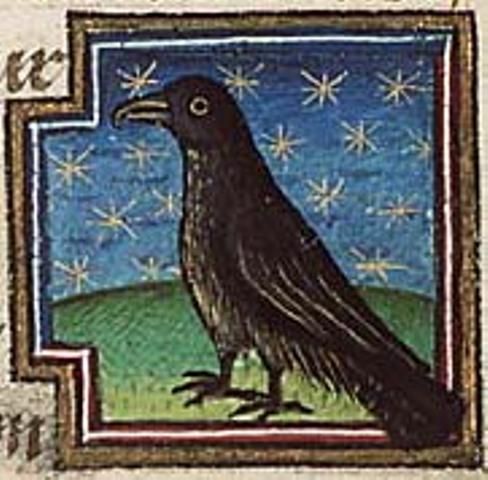















Oghma Grianainech
Oghma Sunface
ALSO: O. Trenfher "Strongman"
The name Oghma--from which it is said the writing system of ogham originated--is actually worth some study. It ultimately is believed to derive from the Indo-European root ak- or ag- meaning "to cut"--which in turn would refer to the alphabet of ogham, wherein types of slashes against the corner of a stone or peice of wood would act as letters (see w/u for more details). Hense, the name of Oghma--and his Gaulic equivalent Ogmios--is likely derived from the alphabet's name, and not the other way around.
Oghma in Irish myth is said to be one of the Tuatha Dé Danann, the son of the Dagda and nephew of Nuada, who form a type of divine trio--the Dagda, who was the all-father; Nuada, king and god of war; and Oghma, who in his continental form is associated with Hercules--and the Irish myths name him as a great warrior and champion--and with the devising of letters and possibly a psychopomp, both of which may give him some association with Hermes, though not enough for Julius Caesar to call him Mercury in the Gallic Wars (Mercury is generally believed to have been Lugh). However, it does form a parallel between the Irish pantheon and the Germanic, with Odin, who like the Dagda was called "all-father", Nuada, who like Tyr was missing an arm, and Oghma and Thor equated with Hercules.
In "The Second Battle of Magh Turedh," it is said that Oghma was forced from his place of honor by Formorian king Bres to become a collector of firewood, until the day that Lugh Lamhfada came to fight against the Formorians and restore rule to the Tuatha De Dannan.
Based on these descriptions, as well as his name, he is likely related to the Gaulish god Ogmios. There is also a Welsh figure Euuyd mentioned in the Llyfr Taliesin (68.14-15); he's paired with Math Mathonwy, the great wizard of the Mabinogi, in a poem which also mentions Gwydion and Amaethon; it's likely that there is a lost tradition of Euuyd, and may be similar to that surrounding Ogma and Ogmios.

Back to "O" | Back to JCE
Home
Mary Jones © 2003